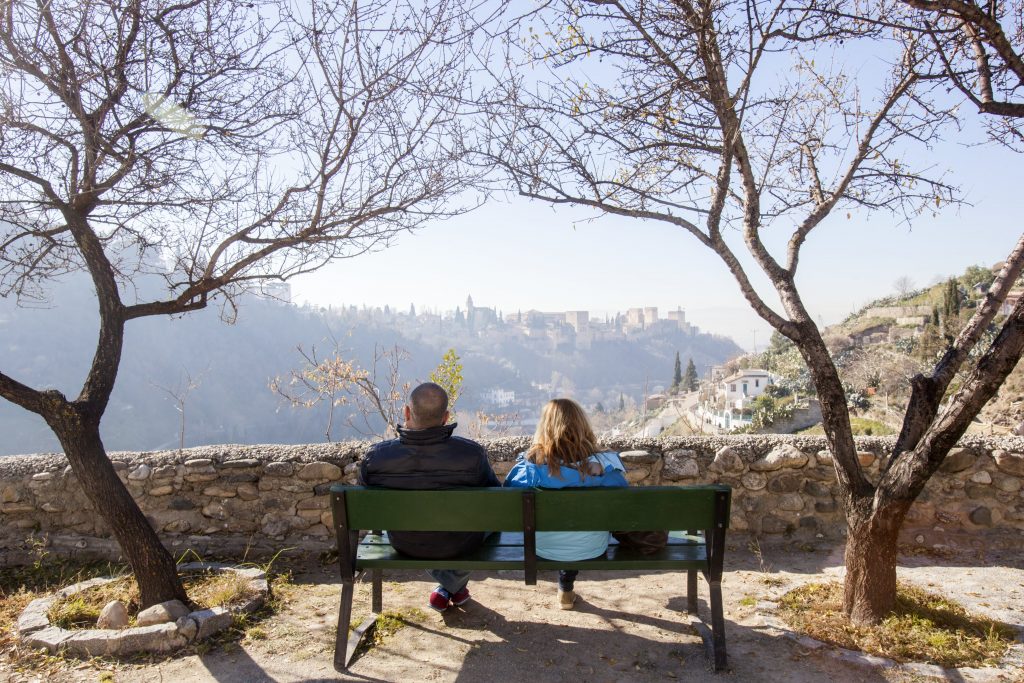10 essential places to visit in Granada
23/11/2020
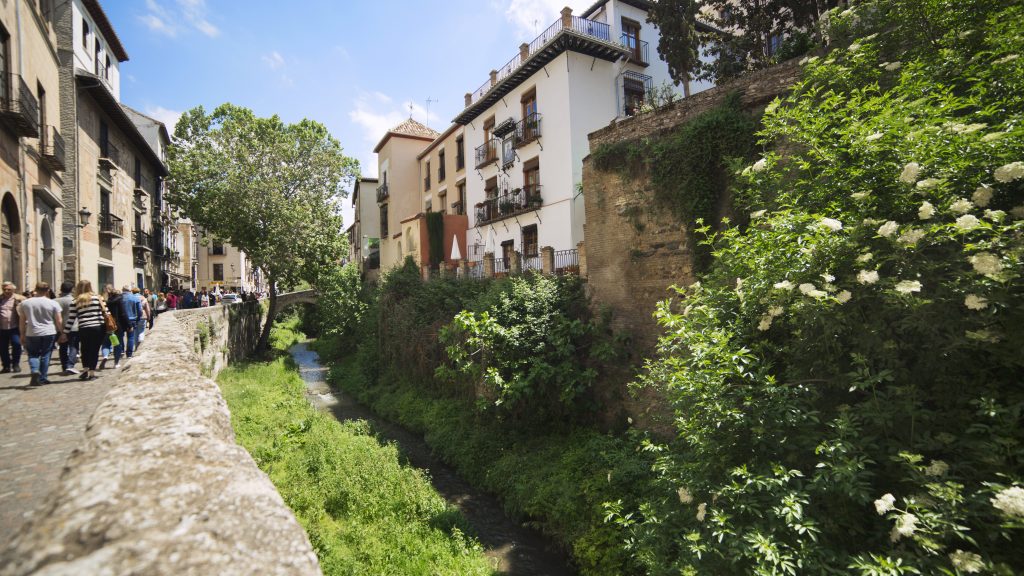
Índice de contenidos
1. The Alhambra and Generalife
It is the best preserved Muslim palatine city in the world. A fortress started to be built in the 13th century and which has miraculously survived to this day to show us its impressive palaces and gardens that were once wandered by the Nasrid monarchs. Every year it receives more than 3.5 million visitors and, being one of the most visited monuments in the world, it is advisable to buy the ticket, or book a guided tour that includes it, well in advance to be able to choose, without problem, the access time to the Nasrid Palaces that suits us the best.
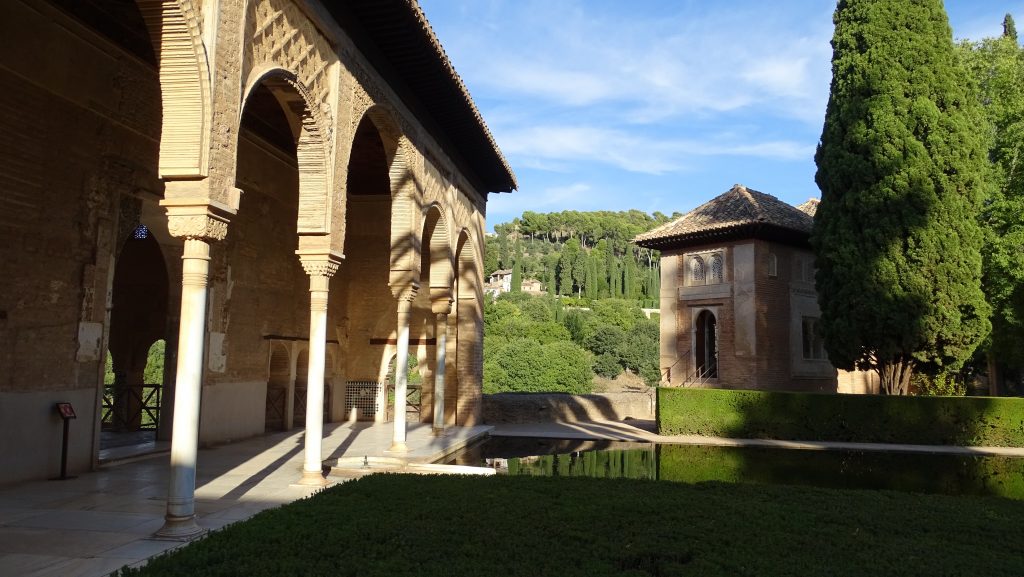
2. San Nicolas viewpoint
This viewpoint, which is located in the upper part of the Albaicín neighborhood, is known worldwide for its incredible views of the Alhambra and Sierra Nevada. The best time to visit is, as we can see in the image, at sunset because we will have the best sunlight conditions to get the best pictures. In addition, former US President Bill Clinton described it in 1997 as the most beautiful sunset in the world!
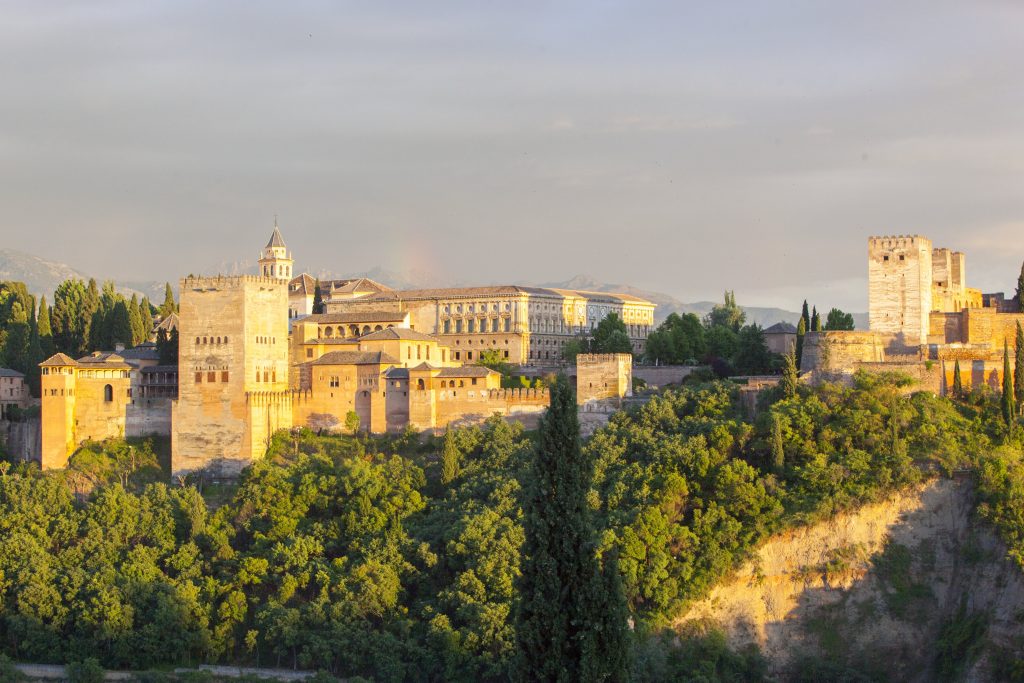
3. Tapas bars in Granada
Going out for tapas in Granada is the most common among locals themselves and there is even a competition between those who value quantity versus those who prefer the quality of tapas. Every year a “Granada de Tapas” tapas contest is organized where a jury chooses those tapas with the best flavor as well as the most original. Our favorite area to go out for tapas is Plaza Nueva and the Realejo neighborhood … although it is already known that there’s no accounting for taste…

4. Cathedral of the Incarnation
It is the culmination of the so-called Reconquest and its construction began in 1505. It is located where the Great Mosque of Granada or Aljama Mosque was located. It is one of the main works of the Spanish Renaissance, but it was never finished because a problem with the foundation of the building prevented the completion of the towers that Diego de Siloé initially planned. To highlight: Its imposing Main Chapel.

5. The Royal Chapel
The simple fact of knowing that the remains of the Catholic Monarchs rest here, make your visit a must. When visiting the mausoleums of the kings, the impeccable Carrara marble with which they were made is overwhelming. In addition, we can see the personal collection of flemish paintings of Elizabeth the Catholic, as well as original personal objects such as the crown of Elizabeth I and the sword of Ferdinand II.
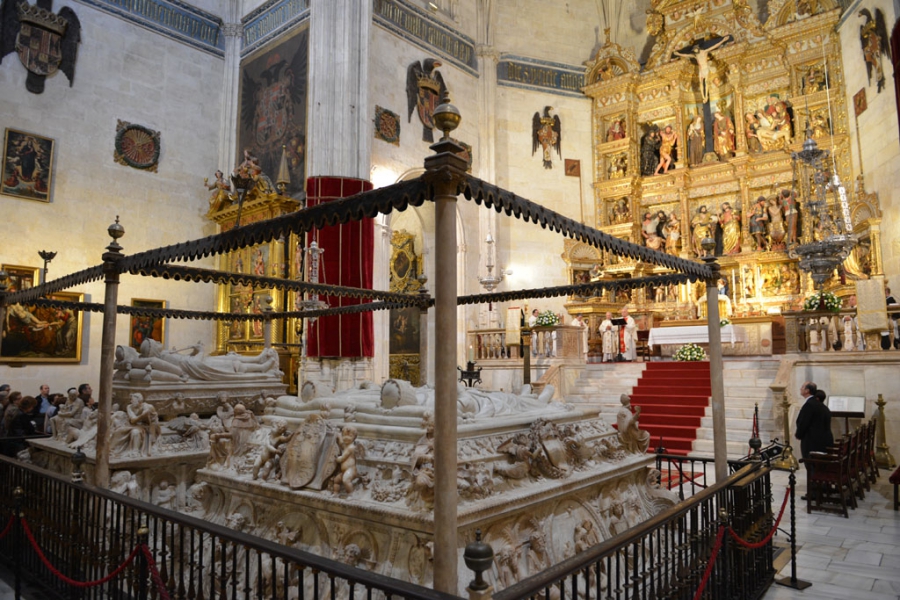
6. The Paseo de los Tristes
So called because the funeral processions passed through this street on their way to the San Jose cemetery, located on the same hill as the Alhambra, known as La Sabika. His real name is Padre Manjon. It is perhaps the most romantic street in Granada, located at the foot of the Alhambra and with numerous terraces to enjoy the views while having a snack and being entertained by the many artists and street musicians always acting in the area.

7. Hammam Al-Andalus
They are fundamental in the social life of Arab culture and in Granada we have the opportunity to relax and enjoy these Arab baths that have successfully recreated the atmosphere of a hammam, in which, in addition to performing thermal contrast baths (at style of the Roman baths) while we have a delicious tea, we can also hire a massage with aromatic essences. An experience to forget about the world outside for a while!
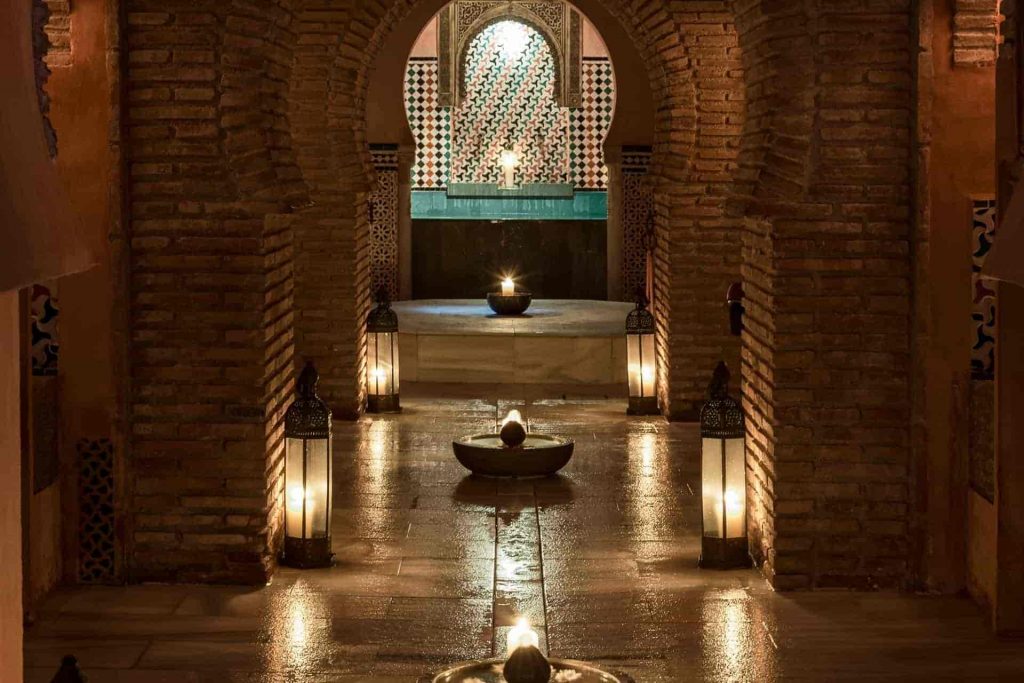
8. The Carthusian Monastery
It is an authentic baroque marvel, which, being located on the outskirts of the city, in what was an old Arab carmen called Aynadamar, sometimes escapes the usual tourist route. But everyone, who finally visits it, is fascinated by the beauty of its High Altar and Sacristy. Its construction lasted more than three centuries and it is also very interesting to learn more about the peculiar Order of the Carthusians.
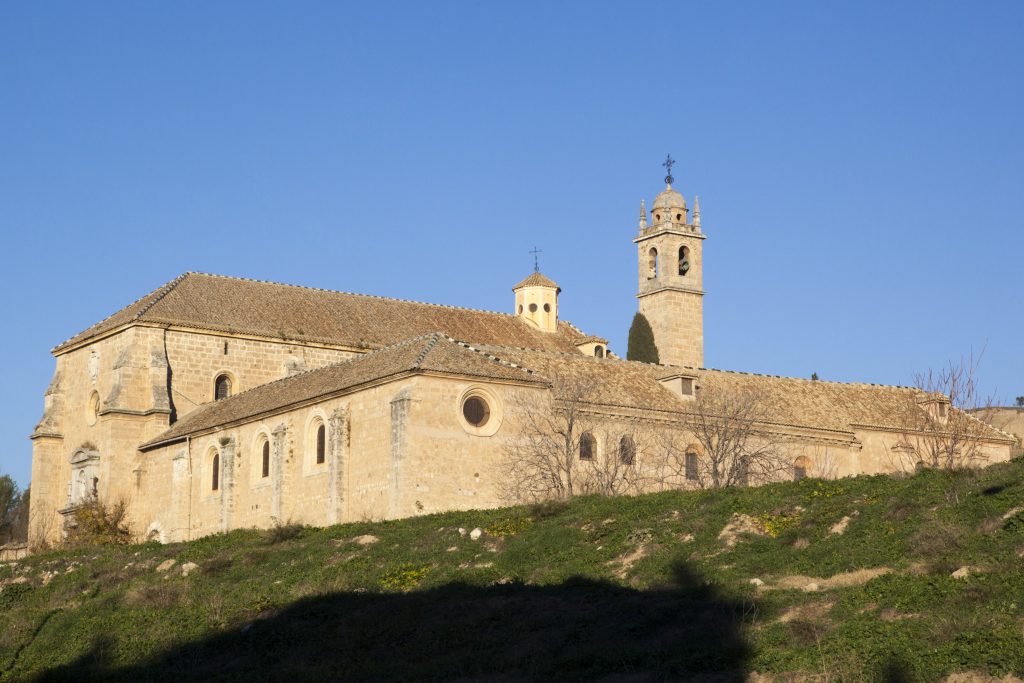
9. San Jeronimo Monastery
Another architectural jewel that we can enjoy in Granada, this time of Renaissance style, where the remains of Gonzalo Fernández de Córdoba, the Great Captain of the Catholic Monarchs, also rest. A man who was a key piece during the Reconquest. Its construction marked a turning point in which the Middle Ages came to an end as the Modern Age began, and a light that illuminated the artistic and urban style of Granada in the following decades.
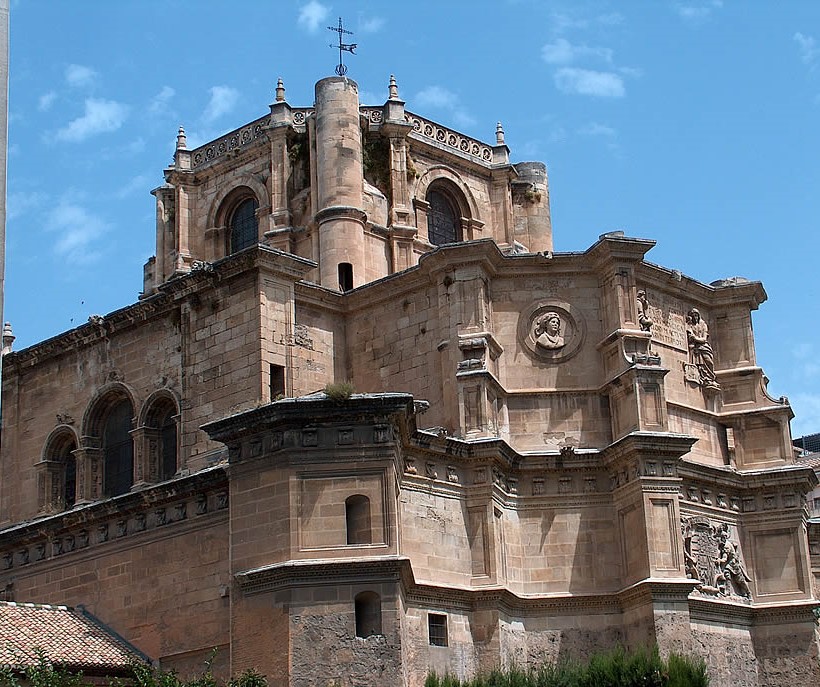
10. The Sacromonte quarter
Strolling through the Sacromonte is like traveling back in time, one has the feeling that the clock is stopping and in every corner we have a new opportunity to photograph the Alhambra from this other perspective that seems taken from another era. At night we will have the opportunity to visit one of its caves and enjoy a “zambra” – from the Arabic zamra (flute) -, a flamenco song and dance, that was born directly in the Sacromonte, inspired by Muslim weddings.
